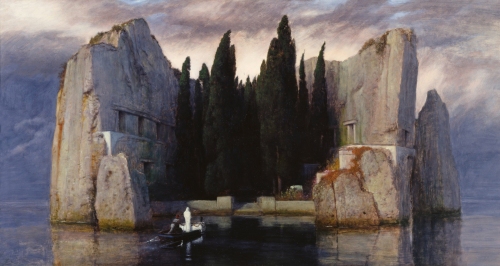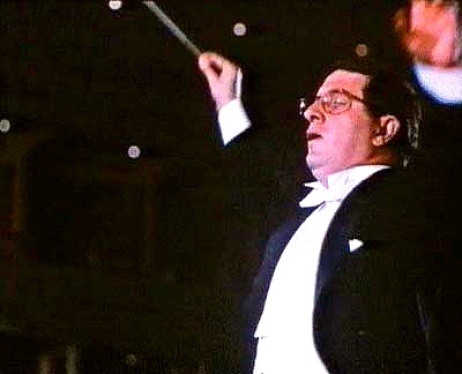A five-note motive in Rahmaninov’s Ostrov mërtvyh (The isle of the dead, op. 29), which evokes the opening of the Dies irae melody used by Berlioz and Liszt, is strikingly similar to what Bernard Herrmann referred to as the motive of power or fate in his score for Citizen Kane.
Rahmaninov’s work was inspired by Arnold Böcklin’s painting Die Toteninsel (above; click to enlarge), and Herrmann’s statements about his creative process suggest that the opening images of the film might have unconsciously reminded him of the painting, which in turn could have aroused an association with Rahmaninov’s work.
This according to “The Dies irae in Citizen Kane: Musical hermeneutics applied to film music” by William H. Rosar, an essay included in Film music: Critical approaches (New York: Continuum, 2001, pp. 103–116). Below, the first minutes of Citizen Kane, followed by Rahmaninov’s symphonic poem.





